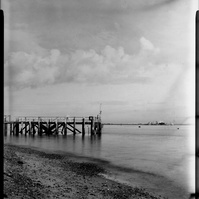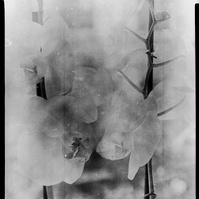0ctober
I’ve been experimenting with some old film I was given; Ilford Commercial Ortho, use by date unknown and Kodalith 2556, which expired in the 1970s.
The Ortho is 9 x 12 cm and the Kodalith I have in both 9 x 12cm and 4” x 5”.
I’ve tried them in different developers, D76, X-Tol, Rodinal and ID11, although with these films, you can tray develop in the darkroom, under red light and use a paper developer such as Kodak Dektol.
The challenge is guessing what sort of speed to shoot the films, taking into account their age etc.
It is fun. I still have a bit of all three films left to use too.
I have settled on ASA 6 (that’s the same as ISO). It’s slow and gives you an appreciation of how difficult it was to shoot plates and early film stock (late 19th and early twentieth century) which had very slow speeds, coupled with one, two or three element lenses and you can begin to some idea of the amount of skill that was required to achieve a result, let alone a good result!
I’ve tried the Ortho and Lith on portraits, landscapes, night photography and still life photos.
Portraits require at least 1000 w/s (on full power) of flash to achieve an f-stop of around 5.6, that’s a lot of light, which leads me to my next point that Ortho and Lith films definitely do not get on so well with low light. It’s easy to end up with an underexposed photo.
The exposure times accounting for reciprocity failure are very long indeed. It’s also not easy to find information regarding reciprocity, apart from on Ilford’s more modern Orth Plus film…so, it’s trial and error with the older, expired films.
Generally, if your exposures stay in the realm of seconds you’ll get a result. If exposure strays into anything over a couple of minutes you could be waiting a very long time with your lens on the T setting. The single night shot I’ve tried on Ortho was an 8 minute exposure, probably needed more like 30 minutes plus!
On the other hand, underexposure yields some quite interesting results when scanned, although I wouldn’t like to attempt to print such thin negatives in the darkroom!
The first set of images are on lith film, the second set on ortho.
As you can see from the images, as long as there is decent light, the ortho and lith film give some interesting results.
Normally, I wouldn’t use expired film, it’s a bit “hipster- esque” but, when you get given boxes of film, well, why not?!
The experiments will continue until I run out of film!

























